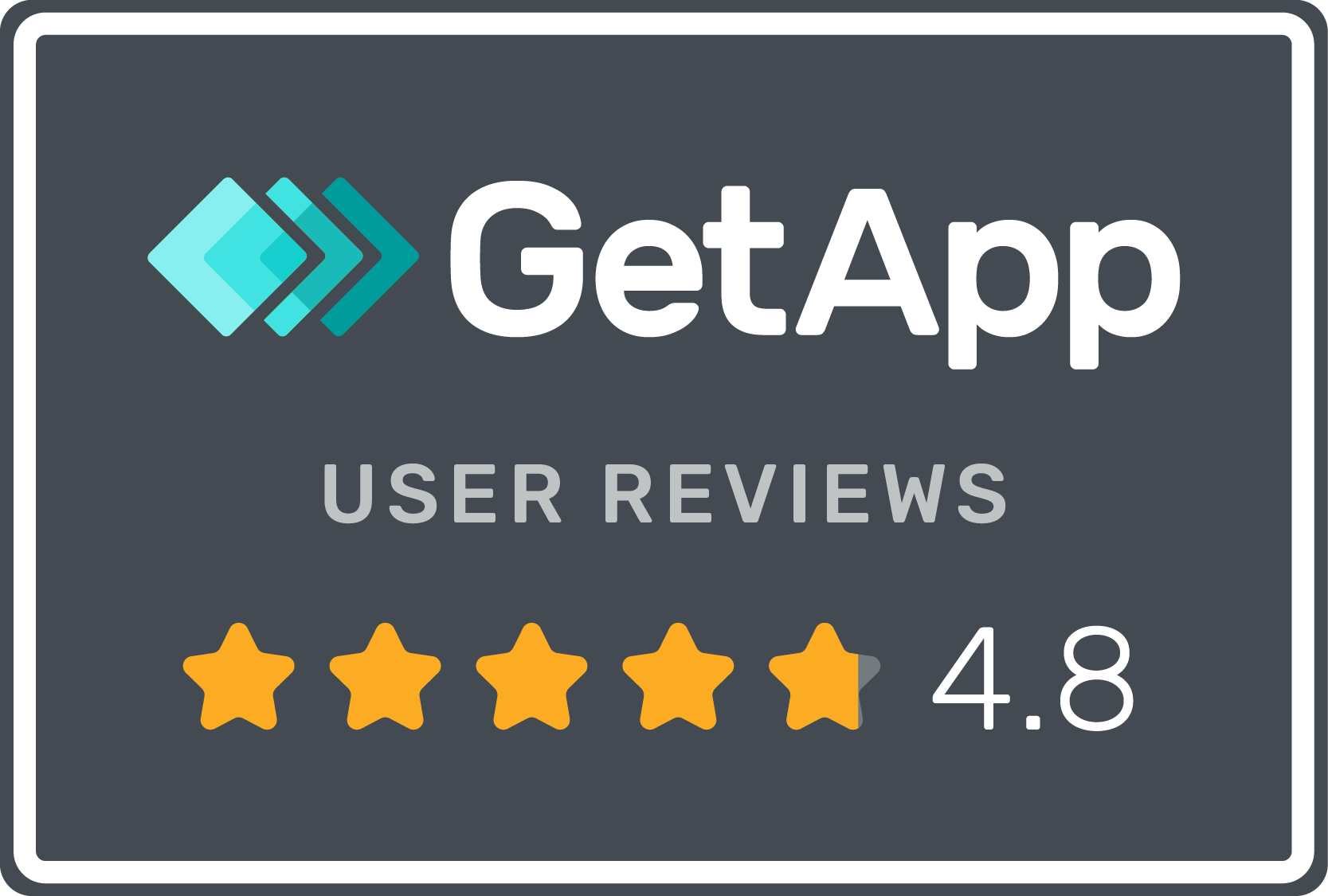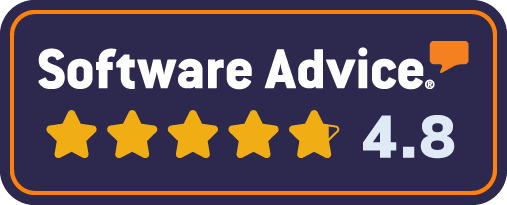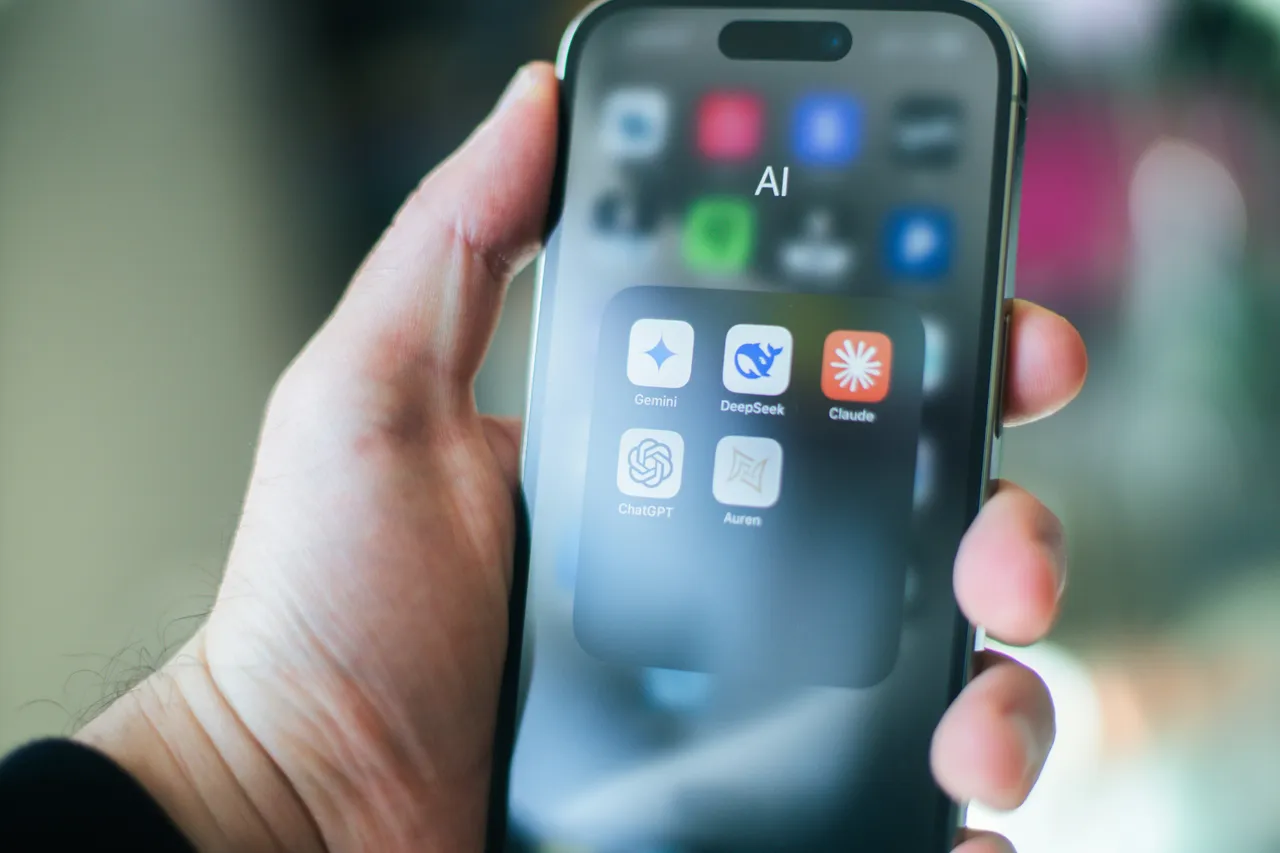
Brandkit Knowledge Base: Structured text now auto-generated for AI LLMs, Chatbots, and SEO
The future of the internet — and the way humans interact with it — is likely to involve more chat and less browsing.
The reality is: Chat UIs like ChatGPT, Gemini, and others are fast becoming the preferred interface. If not already, they soon will be.
At least, until AR glasses or spatial computing become the norm.
Content is still king
Content isn’t going anywhere.
In fact, content — and optimising it for algorithms — is more important than ever.
AI can’t deliver relevant or useful results without access to fresh, evolving, structured content.
SEO still matters — but only because…
SEO remains relevant, but only because AI models crawl and index web content — just as search engines have always done.
But where traditional SEO focused on keywords and phrases, Generative AI prefers questions, answers, and natural, conversational language.
(That said, links and domain authority still count.)
The Web will wither on the vine (sadly)
As users shift from Google Search and websites to Chat-based UIs, the traditional web will fade — slowly, like newspapers are now.
Sure, websites, magazines, and newsprint won’t disappear entirely — but their influence is waning.
Preparing for a chat-first future
As Chat becomes the dominant UI, brands need to adapt. Here’s how:
- Ensure your content is accessible and promptable by AI.
- Generate structured metadata for unstructured data (e.g. images, video).
- Rewrite content in conversational formats AI can interpret.
- Capture your organisation’s knowledge in structured formats and databases.
- Be thoughtful about what IP you expose publicly vs. what stays behind logins or paywalls.
New in Brandkit: Auto-Generated text for SEO and AIO
At Brandkit, we’ve been thinking ahead. Here’s what we’ve already implemented to help brands navigate the new AI-first web:
1. sitemap.xml for Search Engines
We automatically generate a sitemap.xml file that lists every CMS page and Asset in your account. This helps search engine crawlers find and index your content.
✅ Already live — Learn more
2. llms.txt for LLM Crawlers
We’ve introduced a new llms.txt file — a machine-readable, plain-text version of your sitemap — built specifically for LLM crawlers. It includes every CMS page and Asset with links, structured to feed knowledge into AI models.
Learn more: What is llms.txt and why should you care?
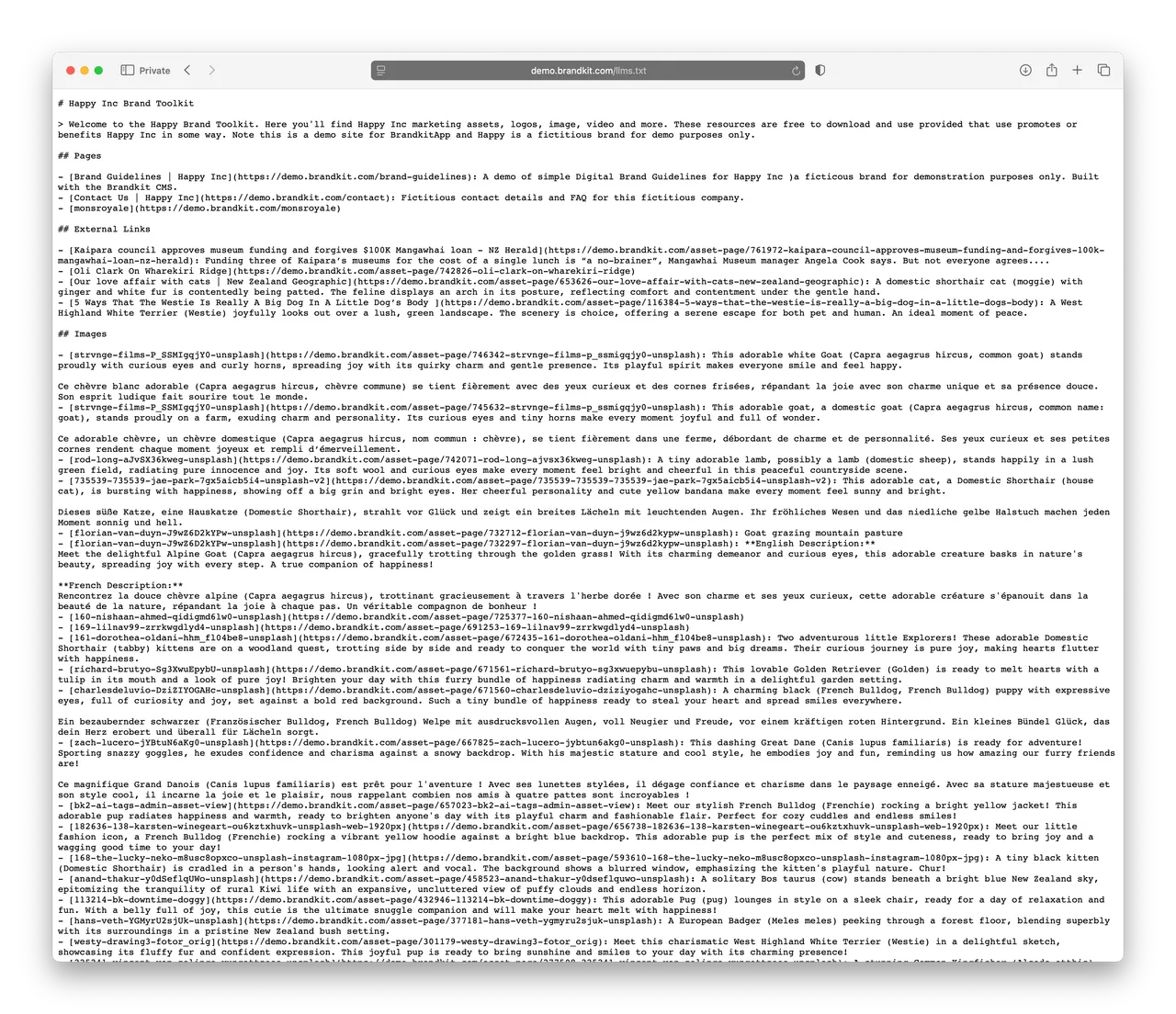
3. llms.html for GPT/RAG Knowledge
We also generate an llms.html page — a structured HTML version of your sitemap — designed as a live RAG (Retrieval Augmented Generation) knowledge source for chatbots, GPTs, or embedded AI agents on your site.
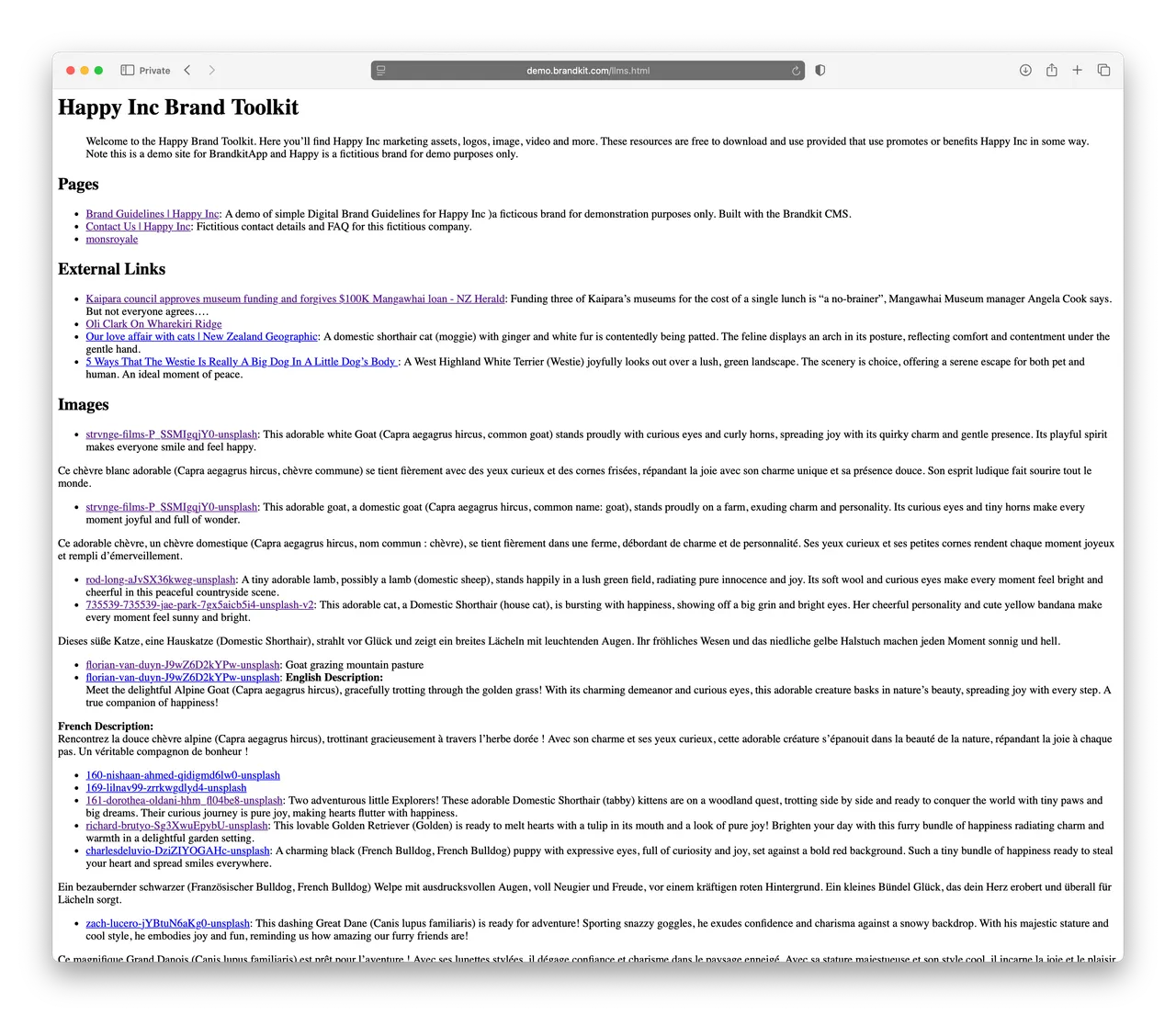
These are live, dynamically updating data sources. Any time you upload a file, create or edit a CMS page, add an FAQ, or embed external media — they update in real time.
Real examples from Brandkit
These are live pages from our own site — including this post:
- Search Sitemap: https://brandkit.com/sitemap.xml
- LLM Crawler Text Feed: https://brandkit.com/llms.txt
- RAG/Chatbot Knowledge Source: https://brandkit.com/llms.html
What about IP and security?
With Brandkit, your structured and unstructured content can be:
- Public, and visible to search engines and AI crawlers, or
- Private, stored securely in Vaults and controlled via User Roles.
LLMs and search crawlers only see public data — never what’s protected behind a login or access restriction.
You can test this yourself: try visiting the above links logged out, then logged in, and note the difference in visibility.
How will this impact my Brand Portal and/or user experience?
It won’t.
All this is invisible to users and happens behind the scenes. The LLM crawlers will find your sitemap.xml and llms.txt pages automatically in most cases. For the llms.html for RAG knowledge, you’ll need to add that URL as a knowledge source to your chatbot, or custom GPT.
And the permissions system with Vaults and User Roles will automatically control what data the machines see.
What about my account?
If you’re a Brandkit customer, your account already includes these features — no action needed.
Examples from our demo account:
- https://demo.brandkit.com/sitemap.xml
- https://demo.brandkit.com/llms.txt
- https://demo.brandkit.com/llms.html
Just swap out the demo domain above with your own Brandkit domain to see the results.
To Do: Ensure your photos and other media assets have descriptions
In Brandkit many customers don’t yet add descriptions to photos, images, video etc. However for both SEO and AIO, descriptions (which are used for meta descriptions) are very important for discovery, search, and promptability.
If you don’t yet have descriptions on all your Assets - now is the time to consider adding them - you really should.
That can be a lot of work - but is ultimately worth the effort. Luckily in Brandkit we have the option of AI generated Descriptions for your Image assets. You can also run these batch operations to auto descibe several hundred images at once if needed. Learn more here.
In summary
The world is moving towards chat-first, AI-assisted experiences.
As a brand manager or marketer, you need to ensure your brand is promptable — discoverable and quotable in AI responses.
Brandkit is helping make that possible. With structured text and features like llms.txt and llms.html, alongside the human-focused Brand Portal and search-focused sitemap.xml, your brand is ready for both machines and humans.
At the end of the day, it’s still about your brand, your narrative, your content assets, and your story. We’re here to help you get them into the world — in a brand-safe, future-proof way.
Happy branding :)
Brandkit Knowledge Base: Structured text now auto-generated for AI LLMs, Chatbots, and SEO
Brandkit now auto-generates structured text for LLMs, chatbots, and SEO — making your brand content AI-ready, promptable, and future-proof.

